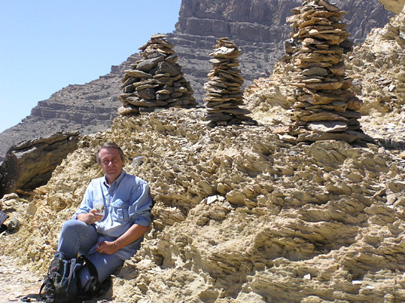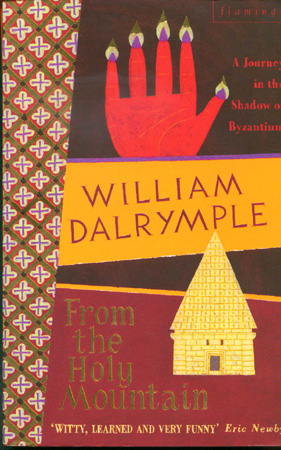|
Under
the Patronage of H.E. Sheikh Nahayan Mubarak Al Nahayan
|
|
The ENHG
Al Ain Chapter
Newsletter
|
|
|
The
Emirates Natural History Group, Al Ain Chapter, PO Box
18057, Al Ain
April, 2005– Issue #227 |
|
An
Oman Weekend - Ibri to Nizwa + Jebel Shams |
article and photos
by W. Moore |
On March 30th , just over 40
ENHG members made their way in to Oman for a weekend
tour. Those doing the Jebel Shams cliff walk on
Thursday either camped out on the mountainside
or stayed in the camping cabins near the top of
the mountain. They all met up on Thursday morning
at the camp-ground and spent the day hiking along
the cliff-edge overlooking wadi Gull some 1000
feet below. Those doing the Ibri – Nizwa
tour met up at the Ibri Hotel in Ibri (a two hour
trip from Al Ain – including border crossing).
Then spent Thursday in Sulaif (an abandoned fortified
town), Al Ayn (the site of an ancient burial ground
with 15 bee-hive tombs in a spectacular setting
– and the village /oasis of Al Ayn where
toads were swimming in the newly plowed and watered
earth among the banana, papaya, citrus and date
palms), Bahla (to visit the old pottery kilns
and the new pottery factories), Jabrin Castle
(site of the Rulers home, pre-Omani unification),
Misfah (a mountain village with an oasis located
on the rock slopes of a wadi canyon [60%+ side-slopes]
- this has to be seen to be believed), and Nizwa
town and souq.
Our purpose was to introduce members working in
the region to a variety of sites in Oman in the
hope that they find something to interest them
while here – and perhaps to carry out some
useful natural history study of the site as well.
I know that sounds like a convenient cover for
a good-time weekend, but believe me, I’m
hooked on a site in Ras Al Khaima that we visited
at the beginning of March. I am seriously considering
a bit of a study on the stone village site we
visited. Then there’s Misfah! I could spend
a lot of time in such a place – if I had
a good excuse to be there – like mapping
out the oasis – in 3D!
The group gathered in several hotels in Nizwa
on Thurs-day evening and had until 10:30 to visit
the Nizwa souq Friday morning before heading out
to Manah – another abandoned fortified town
(much larger than Sulaif). Then it was time to
come home. For most of us that meant a four hour
drive back to Al Ain, and for others it meant
driving all the way back to Dubai – a bit
longer than four hours I think. I really would
like to hear from those who came along, as in
our Mission Statement below.
|
|
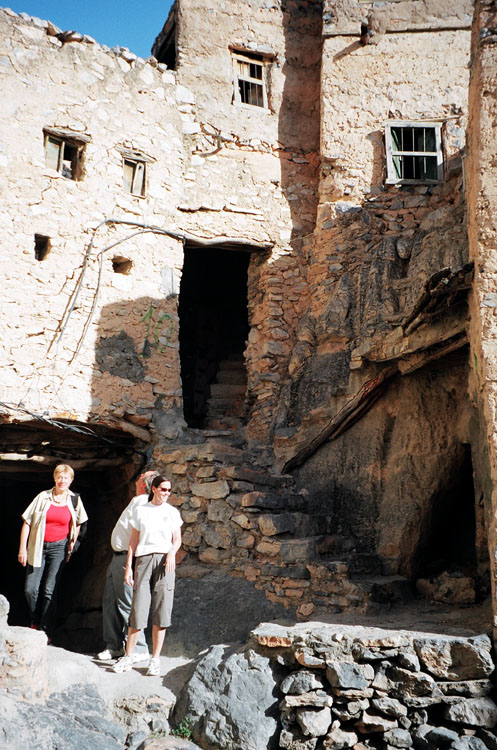
T he mountain village of Misfah
|
|
| O b s
e r v e –
R e c o r d
–
R
E P O R
T ! |
|
|
| This broadsheet is published free to families in
the Al Ain area. If you are a member planning an activity with a natural
history theme please notify us so that others can join you. Everybody
is able to contribute to ENHG and Emirates recordings. For more on
our activities please visit our website <www.enhg.org> or join
our e-mail discussion group at ENHG@Yahoogroups.com. The Group meets
at 7.30pm on the 2nd & 4th Tuesday of the month, usually at the
Intercontinental Hotel. New Members are welcome. |
|
---------------------------------------------------------------------------------------------------------------------------------
| The ENHG
Al Ain Chapter Newsletter…
April,
2005– Issue #227 |
|
|
Ibri
to Nizwa cont… |
|
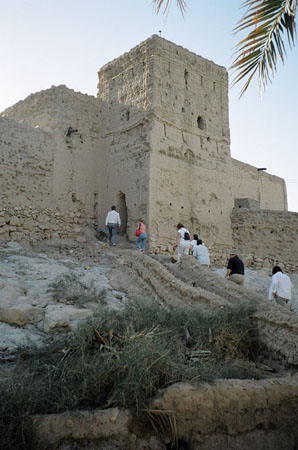 Entryway to Sulaif
Entryway to Sulaif |
|
 Strong sturdy date palms in the Al
Ayn oasis provide shade
Strong sturdy date palms in the Al
Ayn oasis provide shade |
|
|
Most of the group
walked up to the tombs below Jebel Misht |
|
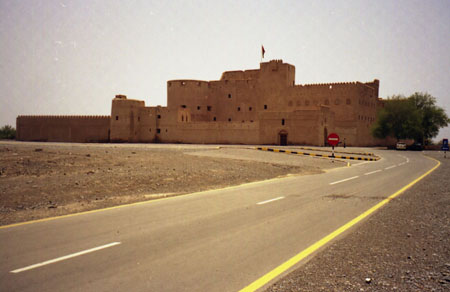
Jabreen
Castle - never taken - 365 years old - housed 300
|
|
 The Al Hamrah racers - raising money for
local hospital fund
The Al Hamrah racers - raising money for
local hospital fund |
|
|
---------------------------------------------------------------------------------------------------------------------------------
| The ENHG
Al Ain Chapter Newsletter…
April,
2005– Issue #227 |
|
|
|
The Nizwa Souq:
article and photos by Louise Lambert
The goat
& livestock section, which is probably the most exciting
area, where all the action occurs, demon-strates traditional
domestic and public life all in one. The men and women will
haul, pull, carry, drag their live-stock in the outside ring
of the area where the livestock is "shown off."
It's all very crowded but it all has an order. Once enough
people have seen the goods for sale, the sellers carry the
animals one by one into the center ring where the buyers form
another circle on both sides. In effect, the seller and his
animals prance in the middle circle, while the buyers form
an inner and outer ring. The seller shouts, good ears, strong
legs, good fat, 5 riyals, 6 riyals, who will buy this from
me? Anytime anyone looks interested they will plunge their
arm wrist deep into the crowd of people and attempt to get
the animal or the seller's attention - since yelling is no
use, everyone is shouting like at an auction floor - the seller
will stop and the potential buyer will pull on the tail, tongue,
ears, smack the animal's bottom to hear it bray, moo, cluck
or what not. This is done very quickly as the circle keeps
moving and the name of the game seems to be sell high, buy
low and fast. Small groups of men and women will
|
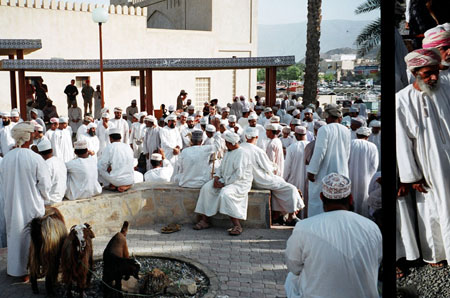 The
Nizwa goat souq in full flow The
Nizwa goat souq in full flow |
|
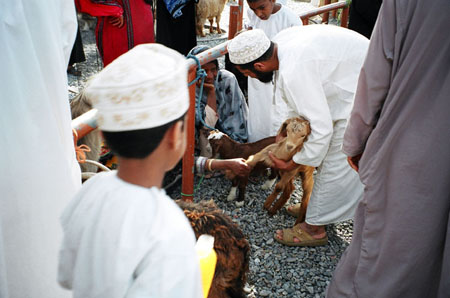
Pulling, patting and admiring the
goats - how much - you say?
|
|
mutter to one another, what
do you think, well, I got this one for 3 riyals, 4 riyals,
what?! 4 riyals, you must be mad, 3.5 riyals, tops, but this
one was bigger, ate better feed, look at his hooves. The reply,
come on, praise be to Allah, I've got 4 more goats to sell,
you want it, ok, 3.5 riyals, sold, cash is turned out, goats
are passed overhead, larger beasts are yanked through the
crowd with a lead rope and the helpers from outside the circle
pass another animal overhead and the movement continues.
The women get played up the
most as they are in charge of anything domestic and do most
of the buying and selling of the food for the family. The
Omanis are very friendly people and everyone says hello and
tries to sell you a goat whether you look like you'd need
one or not. Outside the front gates of the fort (the souq
is held inside), everyone has a truck, bus, van, or cart and
there is even more action here as the animals get carted up
onto roofs between couches, squash, laundry soap, tied down
to bumpers, with 5 children running barefoot. It's very family
oriented, often the younger men will bring their fathers and
their sons, mothers will also bring their daughters to 'show
them how it's done.' You can see mothers pushing the daughter
from behind to yell louder, no, no, 5 riyals that's the best
offer, don't back down. You're the lady here. The men are
very respectful when the little boys try to sneak a stare,
the old men whack them with the camel sticks and snap their
tongues. The shababs understand and go back to minding their
own business, although once granddad is out of site, they
sneak smiles and waves. The older boys always say good morning
and peace be upon you and are very nice often leaving their
stores unattended to walk with you to show you where something
is. Moving along into other areas of the souq the smells of
fish heads, shark, fruit, flower, vegetables, leather, honey,
halwa, and pottery mix together with the smiles and faces
of the Omanis in the morning sun. Little boys in crisp clean
white dishdashes shout hullo, how are yu? Wave, giggle and
run back to daddy who waves at you too. You are welcome here.
Definitely do visit.
|
|
|
---------------------------------------------------------------------------------------------------------------------------------
| The ENHG
Al Ain Chapter Newsletter…
April,
2005– Issue #227 |
|
|
The
Jebel Shams Cliff Walk:
article by Brien Holmes; photos
by R. Morris
Thirteen members completed the
Jebel Shams Cliff Walk on the Thursday before joining the
rest of the Al Ain members for the Nizwa – Manah tour
Friday. For most of them, it was their first time to enjoy
the spectacular sights of the gorge and Wadi Ghoul. The group
all stayed at the campground on top of the mountain, most
in the chalets but some camping.
In recent years, the government
of Oman has developed a number of hiking trails on the mountain,
including a hike from the base of the mountain to the starting
point of the cliff walk. Other trails head off in the ‘alpine’
country of the mountain, one of the highest in the Hajar range.
The trail this season showed
some signs of rainfall earlier in the year with small portions
of the trail washed out and rebuilt. The hikers paused at
the lookouts where stone cairns have been constructed by successive
groups of hikers over the years.
|
|
Brien resting at
the 2nd lookout cairns |
|
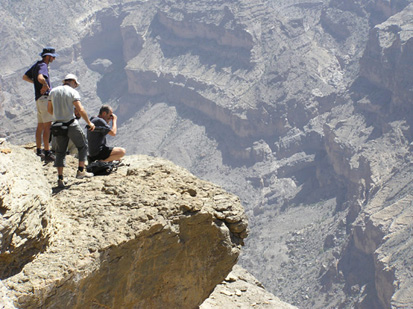
Overlooking Wadi Ghoul
|
|
At the village at the end of the walk, Sap Bani
Khamis, the group spent almost an hour relaxing, exploring
and enjoying the view. At least one member of the party hiked
up to the reservoir above the settlement, at the base of the
escarpment. The reservoir did have a supply of water though
it could not be considered fresh. At the settlement, the small
reservoir that feeds the two fallaj systems was damp and there
was considerable evidence of water leaking from the mountainside.
Fortunately, most of the highlights of the village are still
intact. Though some of the items – gourds, dried pomegranates
– have disappeared, the grinding stone is still in place
and the houses are in good condition. The return portion of
the hike was slowed when one member of the party was feeling
a little under the weather. The group did, however, manage
to tour Misfat before sunset, the popular tourist destination
splendid in the afternoon sunlight. |
|
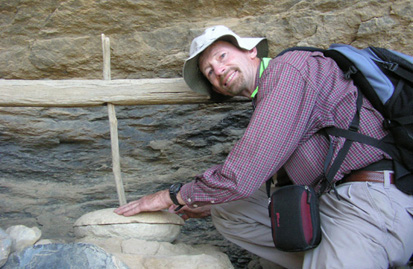
The grindstone still in place
|
|
|
|
---------------------------------------------------------------------------------------------------------------------------------
| The ENHG
Al Ain Chapter Newsletter…
April,
2005– Issue #227 |
|
|
I
E W Revisited
Al Wathba Wildlife Sanctuary
Article by MaryAnn Pardoe
Established
in 1998 as the first legally recognised sanctuary in the Abu
Dhabi emirate, the area covers 5 km2 and includes natural
and semi-natural habitats split into three lakes. The first
lake is fed by the cleaned water from the sewage plant. This
runs into a brackish lake and finally into the furthest lake
which is saline, fed by run off water from local farm irrigation.
The area supports more than 250 species of birds, more than
half of the species found in the UAE. Also10spp of mammals,
13 species of reptiles and 40 species of plants. Several of
the non-migratory species resident here include Black Winged
Stilts, Bulbuls, Sun Birds and Reed Warblers. The sanctuary
is ideally situated between Europe and the further destinations
of migratory birds and provides a vital resting spot for these
species.
John Newby, the director of the sanctuary, explained that
their 5year plan included environmental education, select
tourism for bird watchers and naturalists, and ecological
research. A visitor centre is anticipated within the next year.
Water quality is monitored automatically
at five sites around the sanctuary. This equipment is solar
powered and downloads information on temperature, ph and water
levels directly onto a computer. Changes in ph and temperature
can affect the population of Brine Shrimp which are the main
food source for flamingos.
One of the few tasks where external
control is necessary is the cutting back of reed growth in
the less saline areas. Left to their own devices the reeds
would quickly encroach into the lakes. Reeds can be used for
animal fodder or the manufacture of charcoal tablets, baskets
or barasti fencing.
Although this environment is on the
fringes of suitability for flamingos, attempts have been made
since 1993 to encourage these majestic birds to breed. Flooding
has caused the greatest problems as the birds nest only a
few centimetres above the water level and nests can get washed
away. To prevent this, raised islands have recently been created
and 30 to 40 flamingo pairs attempted to breed this year.
Unfortunately the heavier rain resulted in eggs floating in
to the lake. The next step appears to be the construction
of a sluice gate to give accurate control of water levels.
In spite of all the problems, flamingos did manage to breed
a few years ago.
Over 150 pairs of Kentish Plover
are breeding at Al Wathba and these are being studied by researchers
from Bath University, UK. Either one of the parent birds care
for the eggs and young, or alternatively both, or neither.
The researchers hope to determine what influences this parental
behaviour. So far it appears that older birds are more responsible!
While touring the area we saw the
Desert Hyacinth in full flower. This parasitic plant is pollinated
by insects and dies off several times each year. We were also
fortunate to see a Spiny Tailed Lizard. About 50cm long, this
large lizard lives in groups of 2-3 and hibernates in winter,
closing off the entrance to its burrow so that it appears
uninhabited. There is a population of 12 - 15 on the site.
The trip was fascinating and we extend
our sincere thanks to John Newby and his colleagues, Khaldoun
Kiwan (manager of Al Wathba Reserve), Salim Javed (Avian Ecologist)
and Andreas (research student), for their interesting tour.
I have a copy of the bird list for the area which John Newby
has kindly authorised for private use. Please e-mail me if
you would like a copy at maryannepardoe@yahoo.co.uk. .
|
|
|
---------------------------------------------------------------------------------------------------------------------------------
| The ENHG
Al Ain Chapter Newsletter…
April,
2005– Issue #227 |
|
|
BOOK REVIEW
–
FROM THE HOLY MOUNTAIN
- By William Dalrymple
Published in UK by HarperCollins 1997
article by Geoff Cosson |
|
From a
western perspective, the Middle East is perceived as a sea of
Islam, where the tiny minorities of other faiths in Lebanon
& Palestine are constantly under threat. This has not always
been so, and in this fascinating travel book, William Dalrymple
shows how Christianity, which also originated from the same
tradition as the other two monotheistic faiths, continued for
centuries to exist and even thrive despite the growth of Islam.
Even today, when emigration has been encouraged, about 14 million
indigenous Christians still live in Syria and Egypt as well
as in Lebanon and Palestine.
I bought this book after visiting
Damascus, where I was surprised at the number of new churches
I saw, (alongside pictures of the Pope). I was equally surprised
by the same thing in Cairo, where Copts have also constructed
many new churches. |
| This author follows
the same route as an Orthodox monk, John Moschos, who wrote
about his travels through the Middle East during the late sixth
century, just about the same time as Islam was being established
in Arabia. Moschos’ book was a best-seller in its day.
Up to that time, this area was the base of Christianity, where
the early church was strongest. Most of those early Christians
who had letters from St. Paul, lived in what is now the Muslim
world. The beliefs and philosophy of Christianity were thrashed
out here, not in Rome, which was then of little importance.
Dalrymple wanted to see whether it was possible to visit the
same places today, especially the monasteries which provided
accommodation for wandering scholars and travelers.
His description of following this
route today is really interesting, engagingly written, with
maps and photographs. He describes the residents of forgotten
monasteries in present-day Turkey, Syria and Egypt, who still
eke out an existence, following ancient rituals, belonging
often to Christian sects which seem more like abstruse survivals
of the medieval world of doctrinal schisms. In recent times,
however, the traditionally tolerant Muslim world has become
a more difficult place to live. Until fairly recently (1980s),
there were substantial numbers of Christians following the
‘Nestorian’ doctrine in Iraq, but most of these
have now emigrated. The Syrian Orthodox Church has mostly
disappeared (except for its unlikely descendant in Kerala).
Huge numbers of Greek & Armenian Orthodox adherents once
lived grandly in Alexandria and elsewhere along the Mediterranean
coast, until the rise of modern Turkey (1920s) and of Nasser’s
Egypt (1950s). The Maronites in Lebanon have lost their battle
for dominance.
These communities are generally
in decline today, so Dalrymple’s journey may be harder
to replicate in future. This is a totally enjoyable book,
which casts new light on the evolving history of our region.
It shows amongst other things that early Christianity was
one new sect among many, and that some early writers saw Islam
as another one of these new (Christian) sects. Early Christians
prayed like today’s Muslims, and both communities shared
common ‘saints’, just as Islam of course reveres
the Old Testament fathers and Christ himself.
This wonderful book provides a
whole new perspective on our region’s history.
|
|
|
---------------------------------------------------------------------------------------------------------------------------------
| The ENHG
Al Ain Chapter Newsletter…
April,
2005– Issue #227 |
|
|
A
RETURN TO AL AIN, ITS BEETLES AND OTHER WILDLIFE
article by Mike Gillett, photos by B. Reimer |
|
I don’t think that there has
ever actually been a popular song entitled “I
Left My Heart in Al Ain”, but when I departed
this green and splendid city last November, I reckoned
that there ought to have been one. After all, I was
turning away not just from more than 13 years of residence
in Al Ain and a job at the Emirates University, but
also from a host of dear friends and from one of the
most vibrant natural history scenes in the whole Middle
East. However, I was determined that my leaving was
to be of the au revoir type and not a final farewell
for I was confident of returning.
On April 20, confidence
distilled over into reality as I boarded an Emirates
flight in Birmingham en route for Dubai and onward passage
to Al Ain. Despite the most ungodly hour of my arrival,
Brigitte, Chris and Luke, my hosts for the next 12 days,
were all on hand to greet me and it was long past 04:00
when the last cup of tea was drained and we all finally
retired. During our talk, Brigitte had sketched out
what the programme was for my visit. It sure was going
to be a busy and interesting 12 days of wadi trips and
insect trapping sessions! |
|
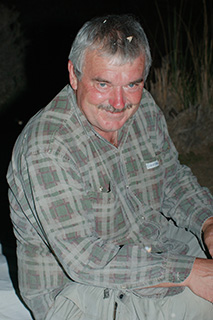
Mike Gillett – in the field
|
|
Next day, the renewal of my experience with Al
Ain’s wildlife began in earnest when, after lunch in
Tawam, I slipped into the mixed plantation of ghaf
and sid’r trees that separates the medical
school from Tawam Hospital. My quest? To check out the ghaf
trees for a colony of the large and spectacular Sulphurous
Jewel Beetle (Julodis euphratica) that I had been
studying for the last five years or so. A 10-minute walk confirmed
the healthy status of the colony as over 50 of these wonderous
coleopterans, including several mating pairs, were sighted
in trees. One beetle was noisily droning around one of the
trees, revealing as it turned, the bright yellow top of its
abdomen, which together with the yellow dusted sides of the
wing-cases explains its common name. My observations confirmed
that all sedentary beetles sighted were in the ghaf
and not the sid’r trees. Julodis beetles
are polyphagous on many trees and other plants and in the
Mediterranean region, sid’r is a preferred
host of all species. So why is this plant not attractive to
Arabian Julodis (including also J. callaudi
and J. fimbriata in our region)?
That same night, we undertook
our first light-trapping session out in Oman at a site near
Wadi Safwan where we had trapped together some 6 months ago
and where Brigitte et al had visited a few weeks earlier after
the rains. For me the session was an interesting one as insects
proved to be much more common than they were last October,
but apparently not as common or as diverse as some weeks previously.
Amongst the mixed array of moths, bugs, grasshoppers, antlions,
wasps etc., the beetles were what mostly grabbed my attention,
although Bobs discovery of a new and beautiful species of
owl-fly must not go unnoticed. The beetles attracted to the
light were varied, but perhaps most striking was the fact
that some of the insects represented species that, although
common seven years ago, had all but disappeared during the
recent spate of dry years. The most obvious of these was the
handsome oil beetle Cylindrothorax angusticollis suturalis,
a vesicant insect whose body fluids (as Bob Reimer can testify)
raise blisters on the skin. Two other long-lost friends restored
that night were the searcher beetle, Campalita imbricatum,
and the domino beetle, Anthia duodecimguttata. Also
recorded in this same category was the migratory Silver Striped
Hawkmoth Hippotion celerio, common only in rainy
years, and not
|
Cylindrothorax
angusticollis suturalis
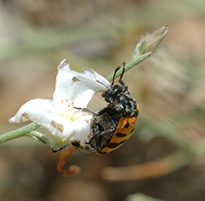 A Blister Beetle
A Blister Beetle |
|
Hippotion
celerio
 A Silver-Striped Hawk Moth
A Silver-Striped Hawk Moth |
|
|
|
---------------------------------------------------------------------------------------------------------------------------------
| The ENHG
Al Ain Chapter Newsletter…
April,
2005– Issue #227 |
|
|
| A
RETURN TO AL AIN cont... |
| seen by me since 1998.
Several specimens of a previously unrecorded oil beetle were
also captured and await identification. The night was rounded
off by the capture of an aggressive black scorpion and a male
camel spider, both of which were duly handed over to Bill Jones. |
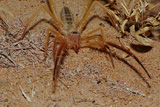 Camel Spider - Solfugidae family
Camel Spider - Solfugidae family |
|
Tuesday was a day with no scheduled fieldwork
as it was to be the day of my presentation to the Group
at its evening meeting at the Al Ain Intercon-tinental
Hotel. The talk was entitled “Beetle Giant of
the UAE” and des-cribed the field studies I had
conducted during September – November 2004 at
Wadi Towayya on the longhorn beetle, Anthracocentrus
arabicus together with a collaborative effort with
Martin Rejzek on another similar beetle, A. rugiceps,
he had collected in southern Iran. After the meeting,
I encountered two interesting dynastine beetles attracted
to the hotel lights, the rhinoceros beetle, Oryctes
agamemnon arabicus, and the lawn beetle, Pentodon
algerinum dispar. Both species were long considered
as Arabian rarities, but the greening
|
|
of the UAE’s deserts has provided perfect conditions
for them and they are now common pests of lawns in Al Ain
and elsewhere. On the way home, we dropped by a quiet street
in Habooy, Markhaniya next to an old date plantation to look
for the large longhorn beetle Jebussaea hammerschmidti
at the street lights. No beetles, but we did see a Brandt’s
Hedgehog, which quite possibly might account for their absence!
Wednesday afternoon saw Brigitte
and I heading off into Oman again, this time in the very interesting
company of Zaki Nusseibeh. En route to Mahdah and A’bul,
we stopped to admire the showy pink clumps of Boerhavia
elegans and the spiky pale blue flowers of Echinops.
The latter provided the first beetles of the trip, the black
and white or yellow rose chafer, Stalagmosoma cynanche.
One specimen of the Sulphurous Jewel Beetle was also seen.
Our trip continued with a visit to the newly restored fort
at Mahdah and the nearby oasis. Then on to A’bul and
first, a walk around the wadi, then a visit to the ruined
fort and a view of the geckoes and mouse-tailed bats within.
The trip was crowned by a cautious ascent of one of the fort’s
towers to watch the sun setting behind the mountains and a
slow climb back down in the dark! Back in Al Ain, we were
invited to Zaki’s house for refreshments and a chance
to see his splendid library. Even this memorable occasion
was not without its beetles, for Brigitte discovered no less
than three species trapped in the water feature in Zaki’s
garden, the chafer Autoserica insanablis and the
searchers, Campalita imbricatum and Caminara
olivieri.
Thursday morning saw us yet
again on our way with a larger party to yet another mountain
locality in Oman, Wadi Musah. We visited the spring that is
the source of some of the water used to irrigate the plantations
and walked around the oasis for several hours. Interesting
finds included the ‘log cabin’ like protective
tube of the psychid moth caterpillar Amicta murina
and the perfectly formed clay jar made by a potter wasp according
to Brigitte and I or by leprecauns according to Brien. Back
in Al Ain, we met up with Sharjah lepidopterist Peter Merrett
and his wife Joy who were to accompany us moth trapping that
night in Jebel Huwwaya or Fossil Valley. Despite the abundance
of green flowering plants around the ghaf and Acacia
trees, the results of the trapping session were quite poor
compared to the previous one and few notable species were
recorded.
Friday morning saw a dozen
or so of us visiting Subaitha in Oman, for a walk along the
falaj to a swimming hole in the mountains. The trip was memorable
for the large variety of butterflies encountered en route.
These included not just the common species like the Plain
Tiger, Lime, Desert White, African Three-Ring, Blue Pansy
and Painted Lady, but also the rare and elusive Baluchi Ringlet.
A notable beetle found on the oleander bushes was the large
jewel beetle, Julodis fimbriata.
Saturday and Sunday were almost
restful as far as entomology goes. On the first night, a short
light trapping session near the Intercontinental Hotel was
improvised. It proved quite popular amongst the local Baluchi
labourers, but was not very successful in terms of insects
recorded. The second day saw me visiting Sharjah University
and my sole diversion into the realm of entomology was to
uncover a few examples of unrecognized species of darkling
beetle Goniocephalum in the desert adjacent to University
City.
|
|
|
---------------------------------------------------------------------------------------------------------------------------------
| The ENHG
Al Ain Chapter Newsletter…
April,
2005– Issue #227 |
|
|
| A
RETURN TO AL AIN cont... |
Monday was a baby-sitting night for me, although
Luke and I did set up the moth trap in the garden, we ran
it only for a short time, but did manage to prove the presence
of antlions. Next day saw us at the ENHG workroom at the Al
Ain English Speaking School, now known as the ENHG Resources
Centre! During the proceedings, experiences of recent trips
were shared, new records discussed and above all, a most ambitious
programme was put forward for the imminent three-day weekend!
Wednesday morning was taken
up by a hot, but excellent excursion in the Khudrah area of
Oman to see the beginnings of Wadi Sharm and its hidden waterfall
as well as the extensive and mysterious archaeological sites
nearby. Notable beetles encountered along the way were members
of the poisonous family Meloidae or oil/blister beetles.
One was the very smart pinstriped charcoal and grey beetle
named Epicauta haemorrhoidalis, because of its bright
red head. My very first article written for Tribulus more
than 10 years ago concerned this beetle. It is found on Fagonia
indica bushes and it makes good use of the plants thorns
for its own protection as shown by my own bloodied fingertips
after collecting a couple! The other species was a bright
orange and black striped species of Mylabris, the
colour scheme advertising for all to see the venomous nature
of this insect. |
Epicauta
haemorrhoidalis
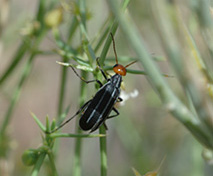 A smart pinstriped charcoal and grey
beetle
A smart pinstriped charcoal and grey
beetle |
|
Wednesday evening was to be the highlight
of my return visit with a very successful moth trapping
session in Wadi Shik, a valley running into Wadi Agran.
It would take too long here to recount all that came
to the light, but there were lots and lots of interesting
insects: owl-flies, lacewings, hawkmoths, antlions,
bugs, grass-hoppers, crickets, katydids, earwigs and
more beetles than I can remember, including 5 large
water beetle species and also an equally aquatic whirligig
beetle. This was my best light trapping session to date
and augers well I hope for my forthcoming trip to Brazil.
Thursday morning saw
us up early again, this time on our way to one of our
all-time favourite locations – Khutwah. Whilst
Brigitte stayed in the oasis with Luke and his friend
Eoin playing in the water, the others set out to see
some of the local archaeology. I tagged along
|
|
but was soon
side-tracked by an abundance of butterflies and other insects
along the way. My prize record was of another unseasonably early
example of Julodis fimbriata on a plant of Tephrosia
apollinea rather than the usual oleander.
That evening was to be the last
but one of the light trapping sessions - this time at Musah.
The trap was duly set up as the others headed off for their
moonlight walk in the mountains. The results were disappointing
compared to Wadi Shik, but this probably reflected the fact
that this was a man-made habitat at Musah not the wild Wadi
Shik.
Nevertheless, the records in retrospect
were interesting. Most of the moths that are associated with
oases turned up, together with antlions, preying mantids, wasps,
bugs, grasshoppers. The star capture was taken right at the
very last moment before the light was switched off – a
large new and unknown chafer beetle from the sub-family Rutelinae.
Something else to work on in the coming months! |
 A Preying Mantis (Mantidae) eating a
Blister Beetle
A Preying Mantis (Mantidae) eating a
Blister Beetle |
|
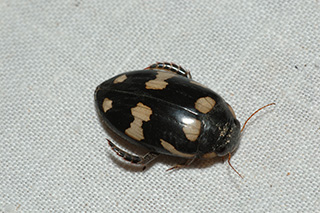 A Spotted water beetle
A Spotted water beetle |
|
|
The morning of my last day of this return visit was spent at
Jabeeb in the desert north of Al Ain where the emphasis was
on searching the inter-dune areas of the “Women’s
Majlis “ for artifacts such as jewelry and coins. |
|
|
---------------------------------------------------------------------------------------------------------------------------------
| The ENHG
Al Ain Chapter Newsletter…
April,
2005– Issue #227 |
|
|
| A
RETURN TO AL AIN cont... |
Only one coin was found together with a few pieces
of glass jewelry, some parts of a bronze pot and much ceramic
pottery. It was also interesting to note the remains of many
beetles that had perished in the sands. Some had died that
very morning and were fresh, others had succumbed long ago
and their carapaces showed obvious signs of bleaching. Species
recognized included Erodius saudarabicus, Prionotheca
coronata ovalis and Pimelia arabicus emiri,
all from the darkling beetle family Tenebrionidae.
Another interesting find was of a female black scarab beetle,
Scarabaeus bannuensis, excavating a tunnel in which
to bury her brood ball of camel dung after laying a single
egg within it.
The evening was a long awaited
night visit to Wadi Tarabat along the flank of Jebel Hafit.
A site long known to Brigitte and I during the research that
led to our contribution to the recent ADCO-sponsored book
about the natural history, geology and archaeology of the
mountain. Despite the full moon and windy conditions, both
of which are detrimental to light trapping, a good time was
had and a few notable records made. One of these was of a
mole-cricket, Gryllotalpa sp., suspected of being
present on Jebel Hafit, but hitherto unconfirmed. Another
was for the beautiful tiger beetle Lophra histrio,
previously recorded at Green Mubazarara.
|
Lophra
histrio
 Tiger Beetle
Tiger Beetle |
|
Well all good things come to an end and so too did my
12-day return to Al Ain and the ENHG. It was a memorable
visit and one that will not be soon forgotten. At the
end of the day it was not just about a reunion with
the insects of Al Ain, but of a reunion with many friends
in Al Ain. I am truly grateful for the opportunity to
have shared in the many ENHG activities outlined above
and I heartedly thank everyone involved.
Until the next time……………
Mike Gillett, Birmingham, UK.
|
|
Mantispidae

|
|
Gryllotalpa
sp
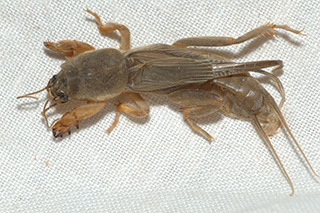 A Mole-Cricket
A Mole-Cricket |
|
| And Man created
the plastic bag and the tin and aluminum can and the cellophane
wrapper and the paper plate, and this was good because Man could
then take his automobile and buy all his food in one place and
He could save that which was good to eat in the refrigerator
and throw away that which had no further use. And soon the earth
was covered with plastic bags and aluminum cans and paper plates
and disposable bottles and there was nowhere to sit down or
walk, and Man shook his head and cried: Look at this Godawful
mess. ~Art Buchwald, 1970 |
|
|
---------------------------------------------------------------------------------------------------------------------------------
| The ENHG
Al Ain Chapter Newsletter…
April, 2005– Issue
#227 |
|
|
|
The Annual ENHG Photography Contest - 2005 |
| May 24th saw 25 members
competing with 145 photographs in 8 categories plus a People’s
Choice Award. There were 39 winners and sixteen honorable mentions.
The Intercontinental Resort Hotel hosted the show in their lovely
Majlis room. The finger food, coffee, tea and juices were provided
by the ENHG. The eight categories were: Archeology and Architecture,
Field Trips and Care of the Environment, Heritage and Culture,
those two lovely sisters - Flora and Fauna, Miscellaneous, the
special theme for this competition – Patterns, People
of the UAE and Oman, and finally ‘Scapes. The judging
for these categories was done before-hand, so the evening involved
picking up your ballot – a weighty task – walking
about viewing the entries – all posted on the ENHG’s
portable bulletin boards – and choosing three “people’s
choice” pictures - truly an impossible task. Here then
are some of the amazing winning photographs. |
People’s Choice
– 1st prize (Tie) – Geoff Sanderson –
Also 1st Prize in Heritage & Culture
Category
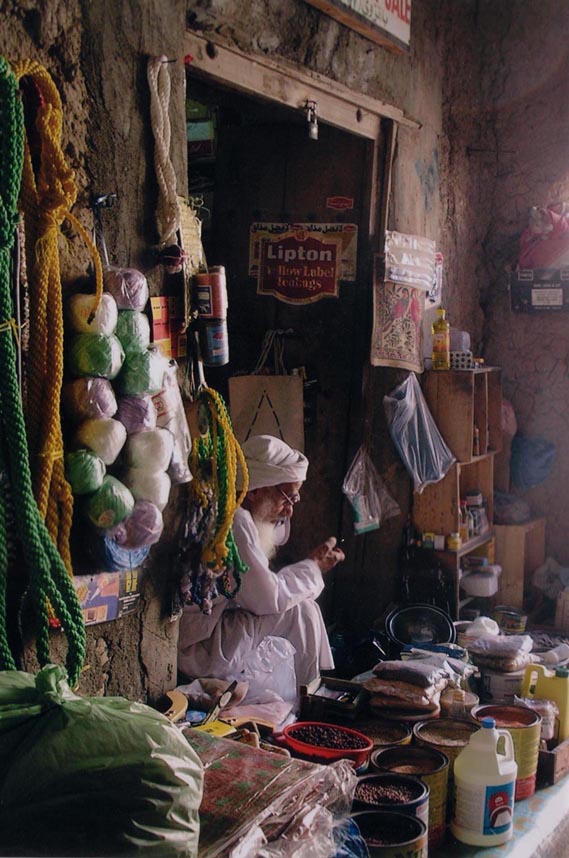 “As Time Goes By”
“As Time Goes By” |
|
|
|
---------------------------------------------------------------------------------------------------------------------------------
| The ENHG
Al Ain Chapter Newsletter…
April, 2005– Issue
#227 |
|
|
|
The Annual ENHG Photography Contest - 2005 |
People’s
Choice – 1st Prize (Tie) – Trevor Dinn
–
Also 1st Prize in the ‘Scapes Category
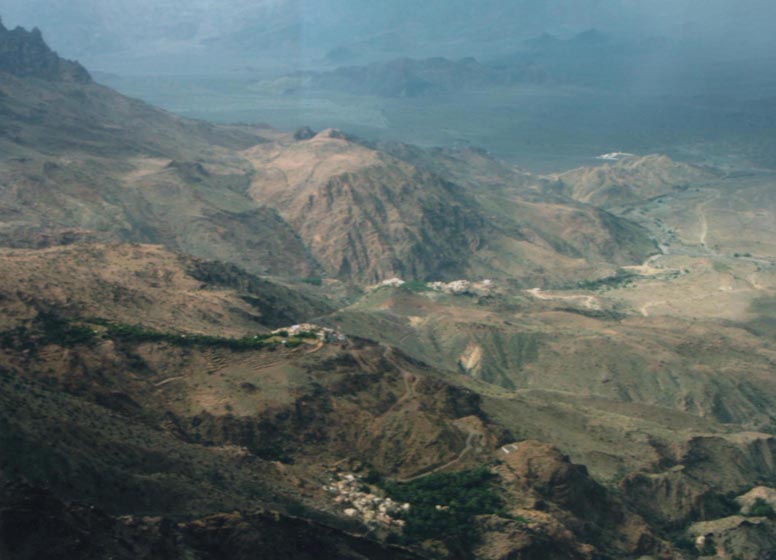 “Mystic Villages”
“Mystic Villages” |
Architecture & Archeology
– 1st Prize – Mike Green
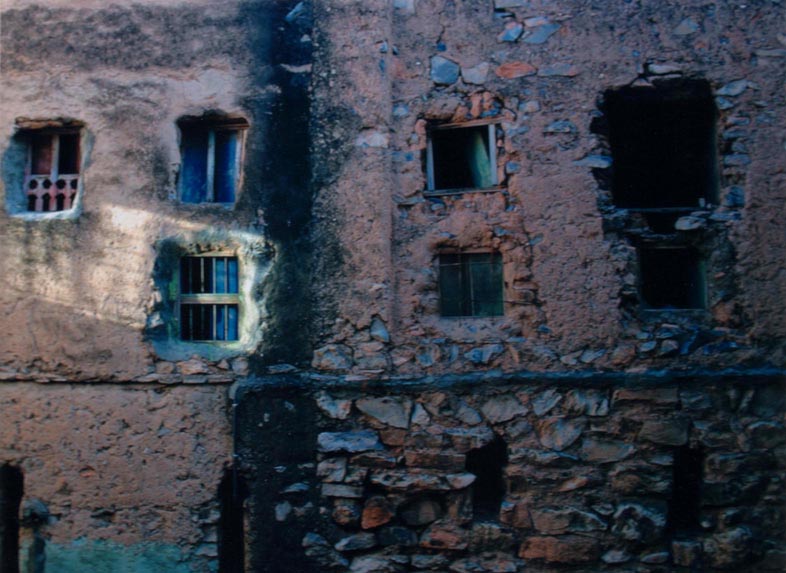 “Windows”
“Windows” |
|
|
|
---------------------------------------------------------------------------------------------------------------------------------
| The ENHG
Al Ain Chapter Newsletter…
April, 2005– Issue
#227 |
|
|
|
The Annual ENHG Photography Contest - 2005 |
Field Trips
& Care of the Environment – 1st Prize (Tie)
- Nasseer Ommer
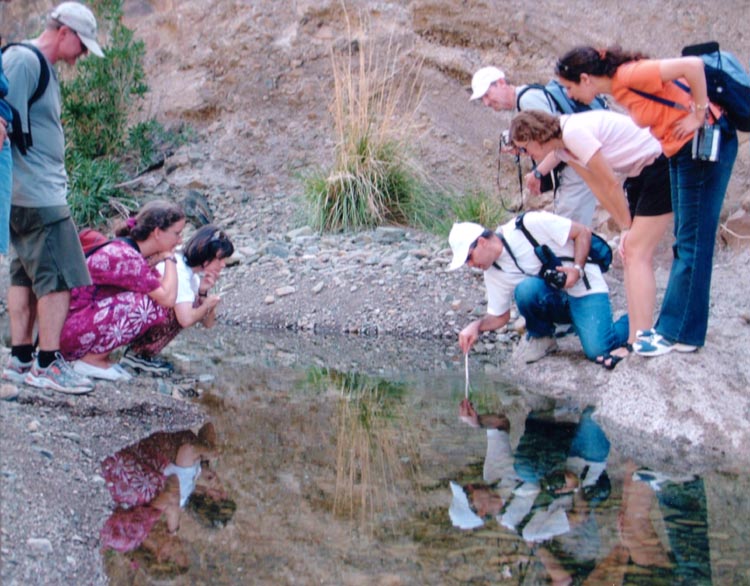 “Curious Reflections”
“Curious Reflections” |
Field Trips & Care of
the Environment – 1st Prize (Tie) –
Bob Reimer
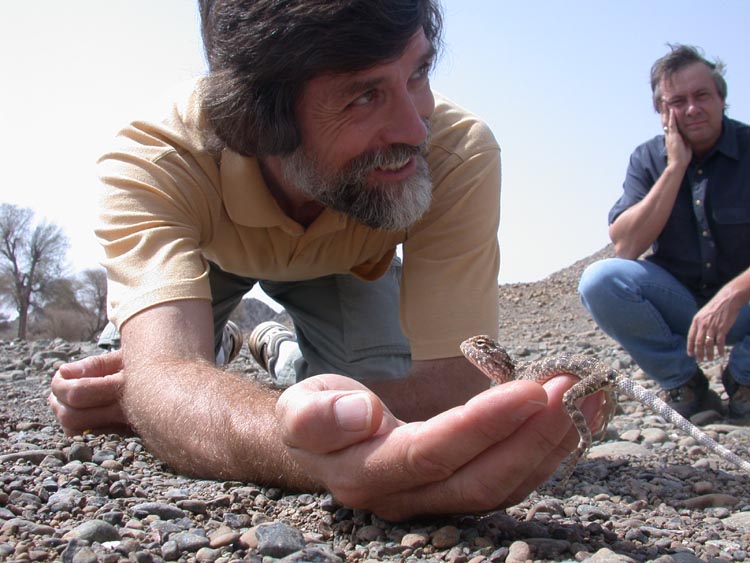 “The Agama Whisperer”
“The Agama Whisperer” |
|
|
|
---------------------------------------------------------------------------------------------------------------------------------
| The ENHG
Al Ain Chapter Newsletter…
April, 2005– Issue
#227 |
|
|
|
The Annual ENHG Photography Contest - 2005 |
Flora
& Fauna – 1st Prize (Tie) – Bob Reimer
 “Plain Tiger butterflies (Damaus Chrysippus)
mating”
“Plain Tiger butterflies (Damaus Chrysippus)
mating” |
Flora & Fauna –
1st Prize (Tie) – Mike Green
 “Not Another Bloody Camel Photo!”
“Not Another Bloody Camel Photo!”
|
|
|
|
---------------------------------------------------------------------------------------------------------------------------------
| The ENHG
Al Ain Chapter Newsletter…
April, 2005– Issue
#227 |
|
|
|
The Annual ENHG Photography Contest - 2005 |
Patterns – 1st Prize–
Tana Thompson

“Stairway to Heaven”
|
People of the UAE & Oman
– 1st Prize – Geraldine Kershaw
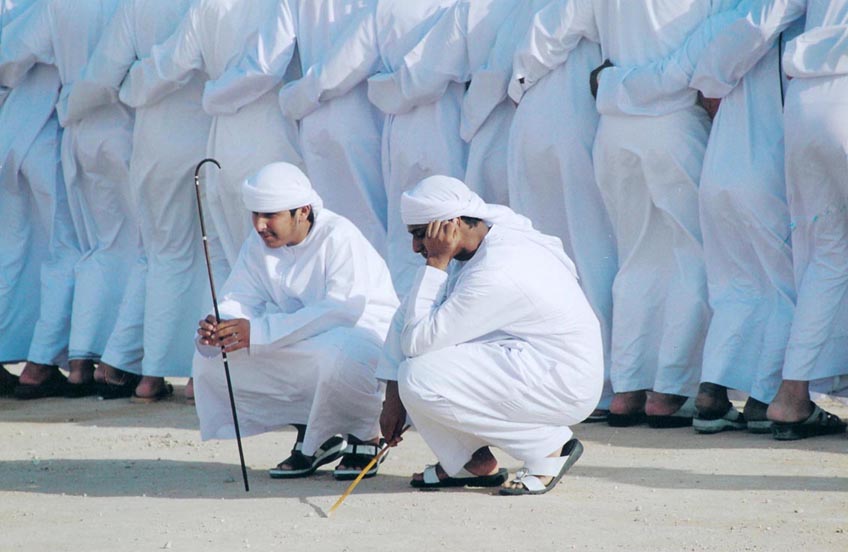 “Problem Solving”
“Problem Solving” |
|
|
|
---------------------------------------------------------------------------------------------------------------------------------
| The ENHG
Al Ain Chapter Newsletter…
April, 2005– Issue
#227 |
|
|
|
The Annual ENHG Photography Contest - 2005 |
Miscellaneous – 1st Prize –
Bob Reimer
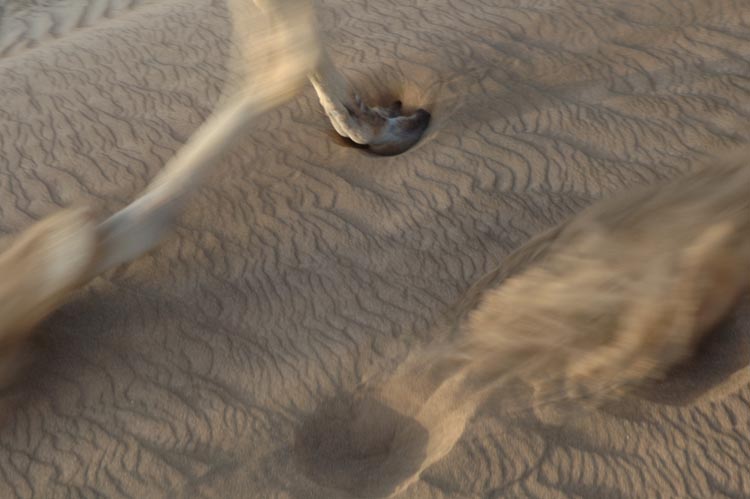
“Hot to Trot”
|
|
There were
just so many great pictures – it is a shame not
to show them all – but…there’s always
next year, eh? Congratulations to all who participated
– we are all winners – both entrants and
audience – let’s get busy and start thinking
about taking more pictures – about sending them
in to the newsletter – and writing about them
– you don’t have to wait for the photo competition
you know . |
| Notice:
As most of you are aware,
Becky and Murphy Turner have been going through some
very difficult times – our hearts and prayers
go out to them as they walk this last passage together.
Be strong Becky – know you are loved – you
remain in our hearts Murphy – as always!
|
| Editor’s Note:
This will be the last issue of the newsletter for the
2004-2005 season. Sad to say, I didn’t manage
to report on even 30% of the things we did during the
year – I need replacing or reinforcements –
anyone interested in helping out, please step forward
in September – there’s just too much going
on for one person to keep up with it all – See
you all next year then! |
|
|
|
|




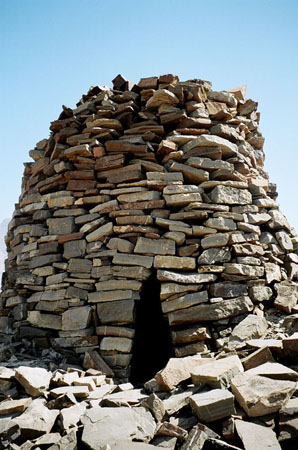


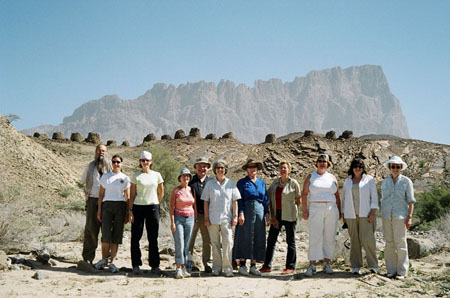

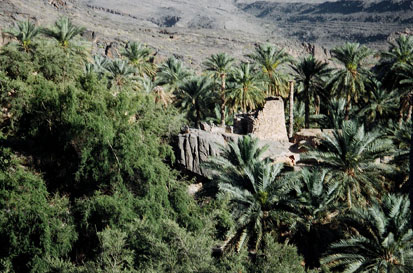
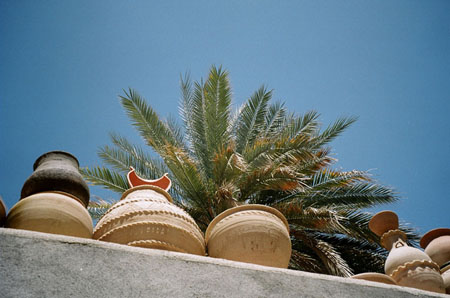

 The
Nizwa goat souq in full flow
The
Nizwa goat souq in full flow
